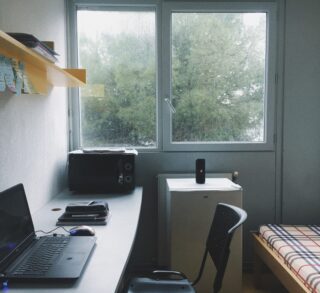HOME | ABOUT US | MEDIA KIT | CONTACT US | INQUIRE
HOME | ABOUT US | MEDIA KIT | CONTACT US | INQUIRE
As universities and colleges look to design new residence halls after the current global health crisis, they will be challenged with how to safely house students while still providing for their social and academic development.

Social interactions have taken on a new normal – social distancing, limited-size gatherings, and a responsibility to act in a manner that does not make someone else sick.
Residence hall design will evolve to reflect the current pandemic condition, say the student housing design experts at KWK Architects.
“Safety and security will be paramount for future students and their families, likely resulting in a desire for single-occupancy bedrooms in residence halls,” KWK Architects Principal Sara Koester said. “Single bedroom units can provide a safe haven – a personal retreat where students can relax away from others.”
She stresses, though, that this configuration may be too isolating for a student away from home for the first time. Many residence halls are designed specifically to house freshmen, and studies have shown that freshmen students in double bedrooms with a roommate have a higher rate of retention.
Social spaces, such as floor lounges and studies, will be sized and organized to allow for social distancing with distinct “stations” at appropriate intervals.
“It has always been important to provide a variety of social spaces that allow for a range of activities – quiet to active and small group to large group – but now residence halls should consider including single-person study spaces where a resident may go to focus on studies or simply decompress in a private, safe zone,” Koester said.